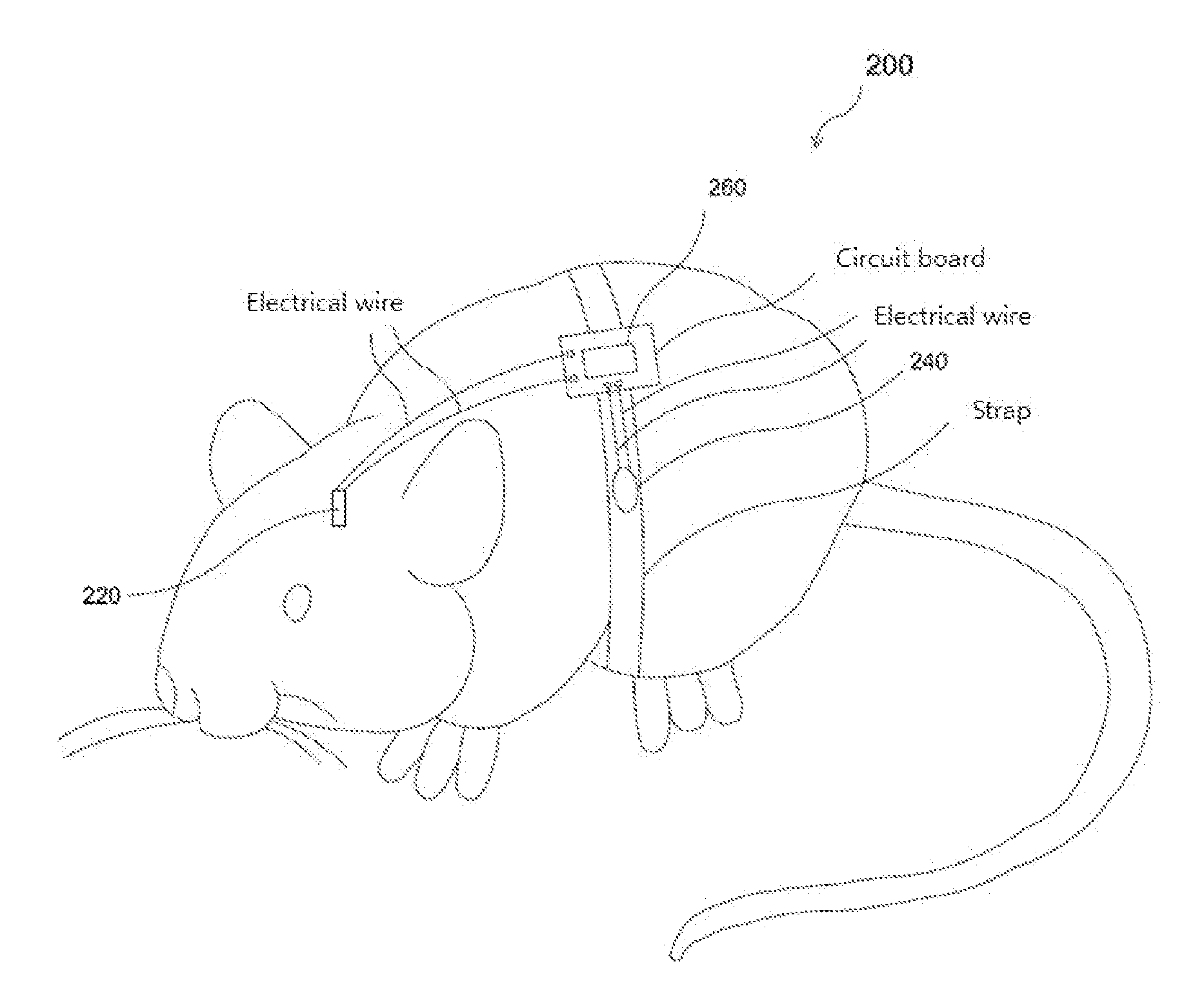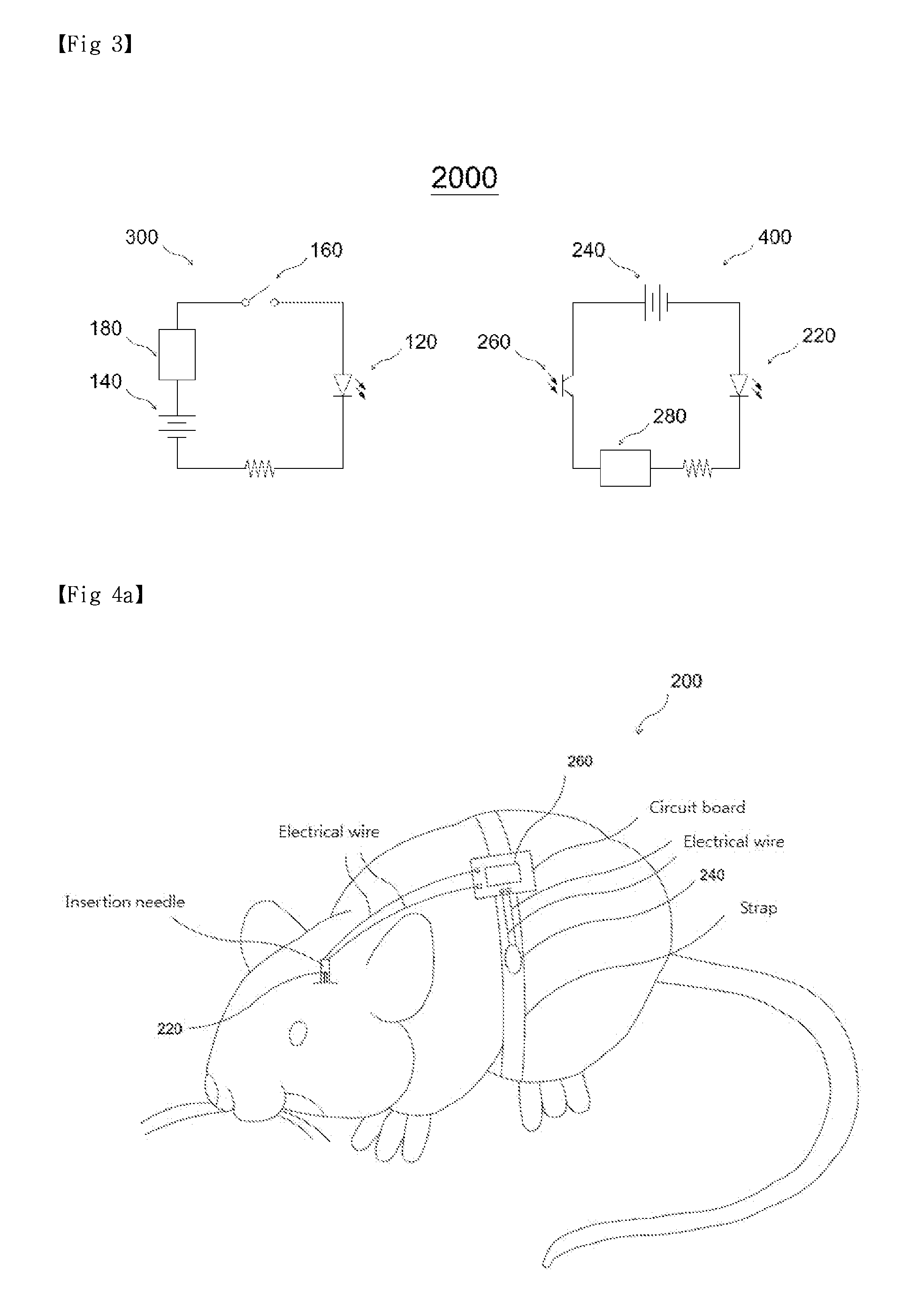Device for wirelessly stimulating body using light
- Summary
- Abstract
- Description
- Claims
- Application Information
AI Technical Summary
Benefits of technology
Problems solved by technology
Method used
Image
Examples
experimental example
[0054
[0055]The distance between the transmission light generator 100 and the body organ stimulator 200 according to the embodiment of the present invention was set to 33.5 cm, then the transmission light receiver 260 of the body organ stimulator 200 was irradiated with light generated by the transmission light generator 100, and the light generated by the transmission light generator 100 was pulse modulated to approximately 1 Hz.
[0056]FIG. 2 is a graph showing a measurement of amounts of the current flowing in the body organ stimulator according to the embodiment of the present invention according to time.
[0057]Referring to FIG. 2, the current flowing in the body organ stimulator 200 was confirmed to have an amount of about 0.7 mA and a periodic pulse form according to time. By this, it was possible to confirm that the current flowing in the body organ stimulator 200 was consistently controllable by controlling the light generated by the transmission light generator 100.
[0058]FIG. 3...
PUM
 Login to View More
Login to View More Abstract
Description
Claims
Application Information
 Login to View More
Login to View More - R&D
- Intellectual Property
- Life Sciences
- Materials
- Tech Scout
- Unparalleled Data Quality
- Higher Quality Content
- 60% Fewer Hallucinations
Browse by: Latest US Patents, China's latest patents, Technical Efficacy Thesaurus, Application Domain, Technology Topic, Popular Technical Reports.
© 2025 PatSnap. All rights reserved.Legal|Privacy policy|Modern Slavery Act Transparency Statement|Sitemap|About US| Contact US: help@patsnap.com



